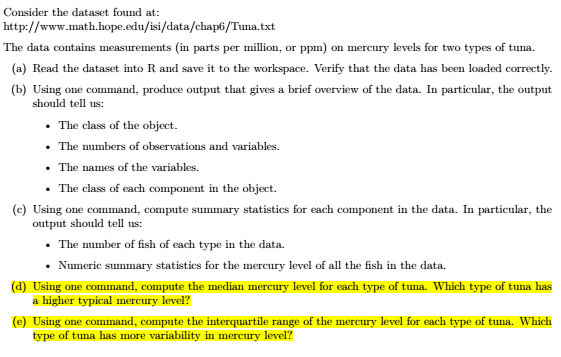Answered step by step
Verified Expert Solution
Question
1 Approved Answer
R programming: using lapply(), sapply(), tapply(), str(), summary() Consider the dataset found at http://www.math.hope.edu/isi/data/chap6/Tuna.txt The data contains measurements (in parts per million, or ppm) on
R programming: using lapply(), sapply(), tapply(), str(), summary()

Step by Step Solution
There are 3 Steps involved in it
Step: 1

Get Instant Access to Expert-Tailored Solutions
See step-by-step solutions with expert insights and AI powered tools for academic success
Step: 2

Step: 3

Ace Your Homework with AI
Get the answers you need in no time with our AI-driven, step-by-step assistance
Get Started


